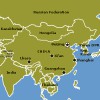
Annie Bligh returns from Qinghai University, Xining, China
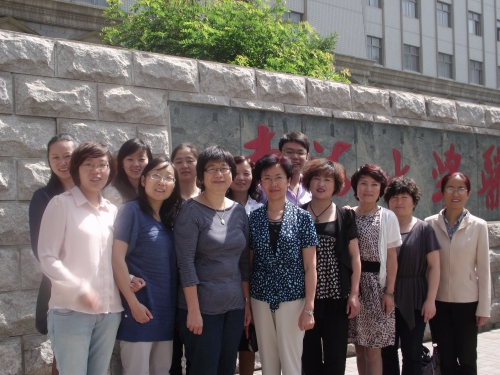
Day 1
Today I was taken sightseeing in the Qinghai lake area, which included going to the Atomic City! Qinghai Lake is a salt lake situated on the Tibetan Plateau in the province of Qinghai, and is the largest lake in China. It is located about 100 km west of the provincial capital of Xining at 3,205 m above sea level. The lake area is about 4,500 sq km. Intermittently I was suffering from headache when I reached Qinghai lake. I was told that it was a sign of altitude sickness.
Atomic City is the former state-owned China National Nuclear Corporation “221” plants. Qinghai Province is China's first nuclear weapons base where they have developed both atomic and hydrogen bombs, and produce a variety of models of strategic nuclear weapons. The area was closed for thirty years as a military restricted area. In 1993 the base was handed over to the local government, and re-named as Qinghai West Town. Qinghai National Patriotism Education Demonstration Base has a number of exhibition galleries detailing from the beginning of the ideas of developing these bombs to making and testing them.
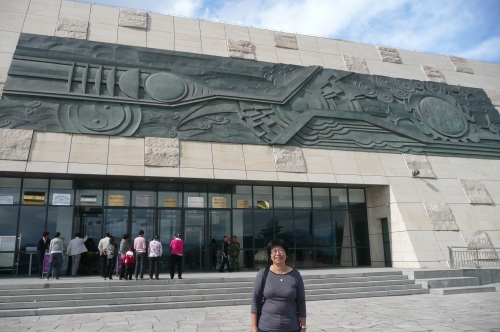
In the evening I was taken to dinner in a modern residential apartment building. Outside an apartment door, a decorative Tibetan curtain was hung on display. Inside the apartment it was a restaurant decorated in Tibetan style. In one room you might think that you were eating in a tent. I had my first taste of butter tea, an authentic Tibetan tea that combined with salt and butter in a special tea churn. The food was very good and the price extremely reasonable.
Day 2
My first talk was given to about 30 staff in the pharmacy school in the morning. The talk was about my research on drug design, metals in medicine, and herbal medicine using Chinese herbs. I have someone to translate questions during my talk.
After lunch I visited the Tibetan medicine department in the College. This was a very interesting experience. In this medical college they train medical students to practice either western medicine, or Chinese medicine, or Tibetan Medicine. Students will have different clinical environment to practice and train for each specialty. I learnt that the philosophy of Tibetan medicine is rather different from Chinese medicine. I saw some of the very crude surgery tools that they used in the past. I have tried on one of their wooden harnesses for a broken arm that are still in use.
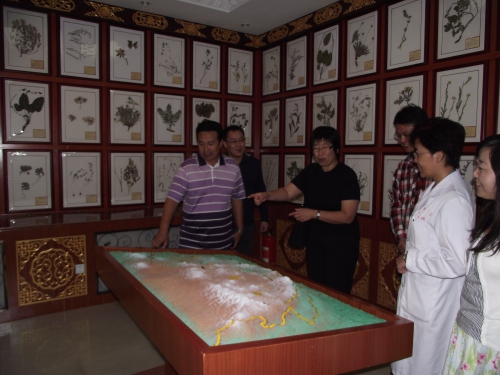
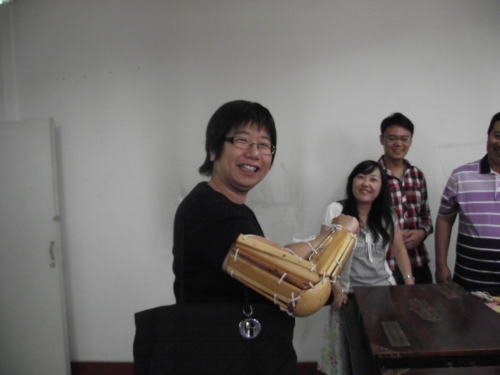
Immediately following the tour I attended an open question and answer session with staff from different departments, mainly about phytochemistry and phytochemical analysis. Amusingly I had one staff asking me about the application of functional magnetic resonance imaging in the science of meditation!
I had dinner with the Dean of the Pharmacy department and I met Dr Li Ming JIA who is the Director of Drug Policy Division of Jiangxi Health Bureau. We had an informal discussion about quality of herbs and how quality controls of medicine in general could be in place.
Day 3
I gave lectures on Metals in Medicine to about 120 third year medical students. During the lectures I asked questions, and rewarded students with RSC T-shirts when correct answers were replied in English. The final T-shirt was given to anyone who could ask me a question in English. So a cheeky student raised his hand and asked in English " Can I have the last T-shirt?". I said sure, you can.
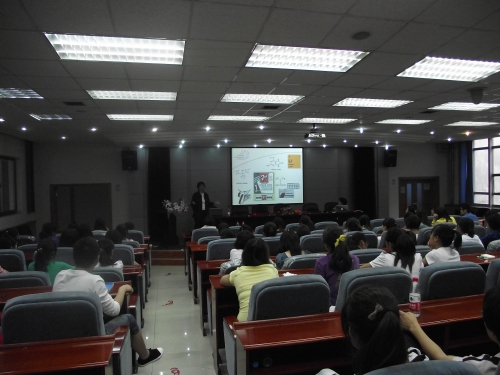
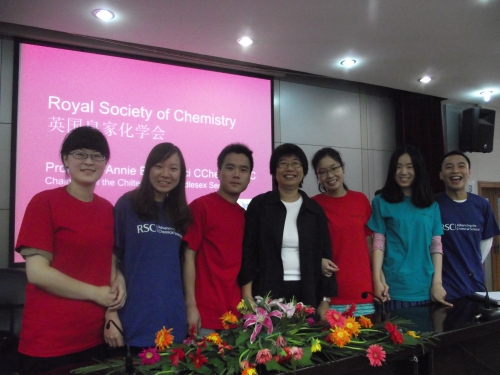
In the afternoon, I met Prof Re-li GE, M.D., Ph.D., vice-president of the University and Director of the Research Center for High Altitude Medicine at the Medical College. He has a publication in Science Express on “Genetic Evidence for High-Altitude Adaptation in Tibet” in 2010. His other research interests include the study of phytochemicals and their pharmacology in Tibetan medicine. We plan to collaborate on the use of herbs to treat polycythemia (production of too many red blood cells in response to oxygen deprivation). In addition we hope to look into health abnormalities such as swelling of the lungs and brain (oedema) and hypertension of the lung vessels leading to eventual respiratory failure.
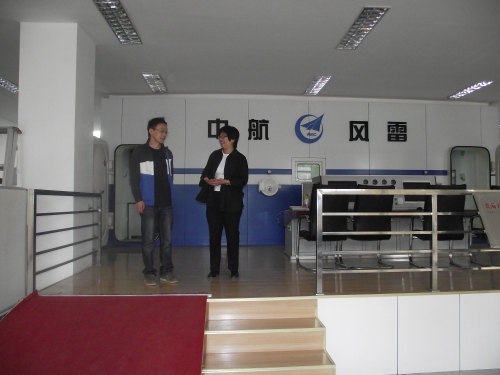
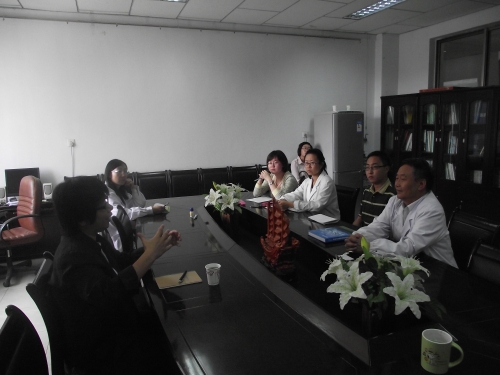
The evening dinner was with President (Wen-Ge MA) and vice-president (Xia ZHAO) of the medical college, the Dean of Pharmacy (Jin-Hui WANG) and Dr Zheng (RSC, Chief Representative in China).
Day 4
As the lectures on the previous day were very well received, the Dean requested more staff to attend my talks and the lecture was video recorded for teaching purposes. Only 40 of the third year pharmacy students attended but I managed to give away all the T-shirts. Most questions I was asked were on how the metal ions worked in different types of imaging technology.
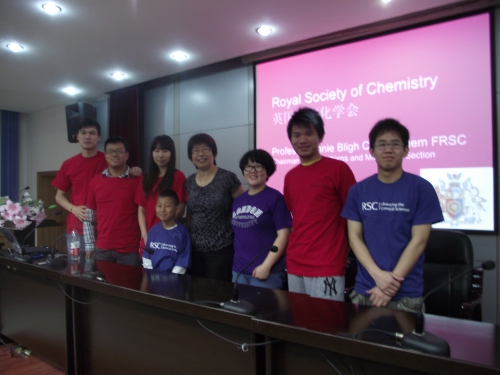
In the afternoon Dr Zheng and I visited the Ta-er Temple, the birthplace of Zongkaba. It was a very wet afternoon.

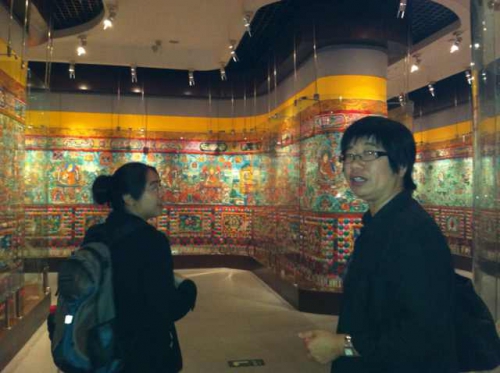
We visited a museum of Tibetan culture and art after the Ta-er Temple. There was a 318 m long Thangka (a Tibetan silk painting with embroidery) on display depicting the Tibetan religion, culture and arts. The display was just like a snake winding through various corners of the room and then winding it back again. It was like a labyrinth and luckily there were arrows on the floor to help you to get out if you had seen enough. Picture panels with important teachings about the life of the Buddha, influential lamas and other deities, and art of enlightenment were presented in this continuous 318 m long master piece!